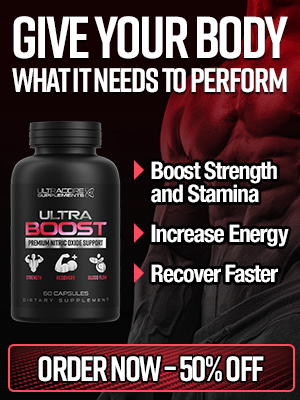Testosterone is produced by the testicles and it is a hormone that gives men their manliness characteristics. They are responsible for traits such as muscular build, facial hair, and a deep voice.
It is also the hormone that is in charge of supporting the creation of red blood cells, mood boosts, aids in the ability to think, and keeps men’s bones strong. Unwanted symptoms can occur when a man lacks testosterones this is also nicknamed as low T.
The levels of testosterone peaks during early adulthood and then it starts to drop as you age. It drops to about 1% up to 2% every year as soon as you hit your 40’s.
When men reach their 50’s and above the lack of testosterone can lead to signs and symptoms such as changes in their sexual desires, impotence, anxiety or depression, less energy, decrease in muscle mass, anemia, hot flashes, and weight gain.
While it is normal for the testosterone levels to decrease as we age certain factors can speed it up. The factors for low T include the following;
- Infection or injury
- Radiation treatment also known as chemotherapy
- Corticosteroid medications and hormone medication to treat prostate cancer
- Stress
- Chronic illnesses
- Obesity
- Alcoholism
There are millions of men that use testosterone replacement therapy for them to restore their low levels of testosterone and feel more mentally sharp, energetic, sexually functional, and alert. But it isn’t that easy and it’s not that simple. The general and overall health of a man directly correlates and affects his levels of testosterone.
For example, having diabetes, being overweight, or having thyroid problems and even taking specific kinds of medications like glucocorticoids and other steroid types of medication or drugs can affect the level of testosterone.
Therefore, just because you have low-t levels does not necessarily mean that you should start taking in extra testosterone.
Diagnosing testosterone levels
Doctors or Physicians diagnose the levels of testosterone through a physical examination and a review of their patient’s symptoms and then they compile it with the results of multiple blood tests because the testosterone levels fluctuate daily.
 If you are physician-diagnosed, you with having low levels of testosterone then other tests may have to be considered before any kind of therapy is conducted.
If you are physician-diagnosed, you with having low levels of testosterone then other tests may have to be considered before any kind of therapy is conducted.
For instance, low-t can increase the speed of bone loss so, your physician may have to recommend a test to see your bone density for them to recommend whether or not you would need treatment for osteoporosis.
Another concern is prostate cancer because testosterone can increase and speed up its growth. Because of this the Endocrine Society strongly discourages the supplementation of testosterone for men in specific situations, this includes those who have;
- An increased blood level of prostate-specific antigen is a blood test to see if there is prostate cancer present in the blood.
- Have breast cancer or prostate cancer
- A nodule in the prostate that can be felt during a rectal examination
The other situations where the supplementation of testosterone is not recommended include;
- An increased count of blood cells
- A plan to become a father soon
- Severe sleep apnea that has been untreated
- Poorly controlled heart failure
- a stroke or a heart attack within the past 6 months
- a penchant to form blood clots
Therapy for low levels of testosterone
In majority of medical cases, men need to have both low levels of testosterone as well as the symptoms before they can go on low-t therapy.
It is still possible to have low levels of testosterone and not experience and have symptoms of low-t.
However, if you are not experiencing the key or necessary symptoms, particularly sexual dysfunction and fatigue or extreme physical exhaustion-these are the most common symptoms for low levels of testosterone, then it is not recommended by doctors or physicians for you to go on low-t therapy.
There are also instances where you may have low levels of testosterone and have the key symptoms to go along with it however testosterone replacement therapy may not always be the right and or the first choice for you or it may not necessarily be the proper medical course of action.
If your physician can assess and identify the origin or source of your declining testosterone levels- for example, weight gain, alcoholism, stress, or particular and specific medications, he or she, as your attending physician may have to address that underlying illness first.
If, however, you and your physician both think that testosterone replacement therapy is the right course of action for you then there are several methods that you need to consider, as published in the Harvard Special Health Report on Men’s Health: Fifty and Forward.
Gels
 Topical gels for testosterone therapy are spread daily onto your skin over both your upper arms, thighs, and shoulders. You must wash your hands right after applying the gel onto your skin.
Topical gels for testosterone therapy are spread daily onto your skin over both your upper arms, thighs, and shoulders. You must wash your hands right after applying the gel onto your skin.
Once you are done cover the treated areas with clothing to prevent other people from testosterone exposure.
Skin Patch
Every 24 hours a patch is applied on your skin in the evening. It dispenses a small amount of the testosterone hormone on your skin.
Pellets
These are placed under your skin and it is usually placed around your hips and or your buttocks. Then it slowly releases the hormone, testosterone. It is replaced every three weeks for up to six months.
Injection
There are several formulations of testosterone that is injected every seven to fourteen days. The levels of testosterone can increase or decrease for a few days after the initial injection and then it will slowly come down.
It’s like a roller coaster where your energy and mood spike up before you fall and trail off.
Oral therapy
These are capsules that are swallowed, or it can be tablets that are attached to your inner cheeks or gums twice in a day. It is then absorbed into your bloodstream.
Most male patients feel an improvement in their symptoms within the period of four to six weeks from taking the testosterone therapy however there are changes like the increase in muscle and its mass which can take three weeks up to six months.








COMMENTS